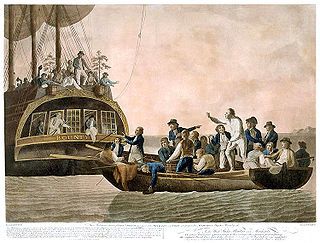“Punting the Pundits” is an Open Thread. It is a selection of editorials and opinions from around the news medium and the internet blogs. The intent is to provide a forum for your reactions and opinions, not just to the opinions presented, but to what ever you find important.
Thanks to ek hornbeck, click on the link and you can access all the past “Punting the Pundits”.
Follow us on Twitter @StarsHollowGzt
John Nichols: How Voter Backlash Against Voter Suppression Is Changing Our Politics
As the 2012 election approached, Republican governors and legislators in battleground states across the country rushed to enact restrictive Voter ID laws, to eliminate election-day registration and to limit early voting. Those were just some of the initiatives that the National Association for the Advancement of Colored People identified as “an onslaught of restrictive measures across the country designed to stem electoral strength among communities of color.”
Why did so much energy go into the effort? [..]
A key supporter of the Ohio voter registration and turnout drive, State Senator Nina Turner says, “Republicans thought that they could suppress the vote, but these efforts actually motivated people to get registered and cast a ballot. It’s no surprise that the communities targeted by these policies came out to the polls in a big way-they saw this not just as an affront to their rights, but as a call to action.”
Turner’s point turns out to be highly significant.
George Zornick: House GOP Plans Even Deeper Food Stamp Cuts
Lost in the shuffle of last year’s big fiscal cliff deal was the deal that didn’t happen on a new farm bill.
One of the major points of contention was funding for food stamps through the Supplemental Nutritional Assistance Program, run by the US Department of Agriculture. Republicans in the House proposed steep cuts: $16.5 billion over the next decade, which would eliminate food assistance to as many as 3 million low-income Americans. The Senate countered with a farm bill cutting $4.5 billion from SNAP over the same time period.
There was simply no deal to be had on the farm bill, and so Congress passed a simple extension until September 30. Now Congress has to start over-all prior versions of the farm are dead, since there’s a new Congress.
When Barack Obama leaves the White House in January 2017, what will black America, his earliest and most consistent supporters, have to show for making his political career possible. We’ll have the T-shirts and buttons and posters, the souvenirs. That will be the good news. The bad news is what else we’ll have…. and not.
To hear our black political class tell it, the election of the first black US president was its ultimate achievement to date, a giant step toward fulfillment of a previous generation’s insurgent agenda for social transformation. Is that real? Has the career of Barack Hussein Obama really advanced any of the historic goals of the Freedom Movement? Is the question even fair?
With corporate media already speculating about next year’s midterm elections, and the presidential contest of 2016, it’s entirely appropriate to discuss the president’s legacy. And fair is fair — the black political class doesn’t want its meager achievements compared to the agenda of those who fought for our freedom a half century ago, it probably ought to abandon its ceaseless self-promotion as the inheritors of that tradition.
E. J. Dionne, Jr.: The Economic Whodunit
The policy mystery of our time is why politicians in the United States and across much of the democratic world are so obsessed with deficits when their primary mission ought to be bringing down high and debilitating rates of unemployment.
And since last week saw a cross-party celebration of the opening of George W. Bush’s presidential library, I’d add a second mystery: Why is it that conservative Republicans who freely cut taxes while backing two wars in the Bush years started preaching fire on deficits only after a Democrat entered the White House?
Dave Johnson: Sequester Closes Cancer Clinic Doors, Congress Does Nothing
Affluent business flyers inconvenienced by delays = national emergency that Congress immediately fixes. Cancer clinics closing = Congress does squat, goes home. This is just one more story of our corrupt times.
Last week the sequester cuts kicked in at airports and caused affluent business fliers to experience some delays, so Congress acted immediately to fix it. The same sequester has been forcing cancer clinics to send away patients so they can’t receive the chemotherapy that they hope will keep them alive. Is Congress rushing to the rescue like they did for affluent business travelers who faced some flight delays? Not so much. They do have their priorities, after all. [..]
The kicker, it doesn’t even save the government money, instead it costs money:
The care will likely be more expensive: One study from actuarial firm Milliman found that chemotherapy delivered in a hospital setting costs the federal government an average of $6,500 more annually than care delivered in a community clinic.
So not only does this sequester kill people, it costs the government much more than it saves.
David Rosner and Gerald Markowitz : You and Your Family Are Guinea Pigs for the Chemical Corporations
How Americans Became Exposed to Biohazards in the Greatest Uncontrolled Experiment Ever Launched
A hidden epidemic is poisoning America. The toxins are in the air we breathe and the water we drink, in the walls of our homes and the furniture within them. We can’t escape it in our cars. It’s in cities and suburbs. It afflicts rich and poor, young and old. And there’s a reason why you’ve never read about it in the newspaper or seen a report on the nightly news: it has no name — and no antidote.
The culprit behind this silent killer is lead. And vinyl. And formaldehyde. And asbestos. And Bisphenol A. And polychlorinated biphenyls (PCBs). And thousands more innovations brought to us by the industries that once promised “better living through chemistry,” but instead produced a toxic stew that has made every American a guinea pig and has turned the United States into one grand unnatural experiment.

 On April 29, 1900 Jones was at Poplar Street Station in Memphis, Tennessee, having driven the No. 2 from Canton (with his assigned Engine No. 382 ). Normally, Jones would have stayed in Memphis on a layover; however, he was asked to take the No. 1 back to Canton, as the scheduled engineer (Sam Tate), who held the regular run of Trains No. 1 (known as “The Chicago & New Orleans Limited”, later to become the famous “Panama Limited”) and No. 4 (“The New Orleans Fast Mail”) with his assigned Engine No. 382, had called in sick with cramps. Jones loved challenges and was determined to “get her there on the advertised” time no matter how difficult it looked.
On April 29, 1900 Jones was at Poplar Street Station in Memphis, Tennessee, having driven the No. 2 from Canton (with his assigned Engine No. 382 ). Normally, Jones would have stayed in Memphis on a layover; however, he was asked to take the No. 1 back to Canton, as the scheduled engineer (Sam Tate), who held the regular run of Trains No. 1 (known as “The Chicago & New Orleans Limited”, later to become the famous “Panama Limited”) and No. 4 (“The New Orleans Fast Mail”) with his assigned Engine No. 382, had called in sick with cramps. Jones loved challenges and was determined to “get her there on the advertised” time no matter how difficult it looked.
 1947 Thor Heyerdahl and five crew mates set out from Peru on the
1947 Thor Heyerdahl and five crew mates set out from Peru on the
Recent Comments